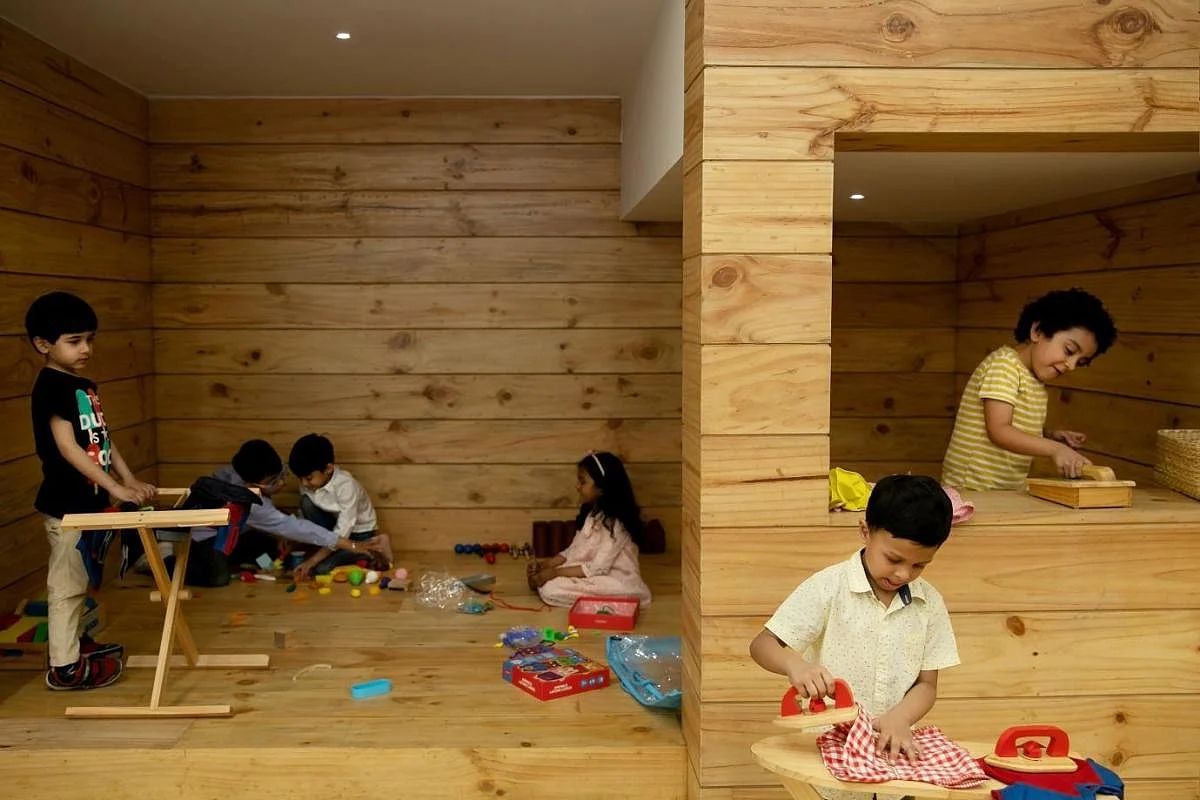

As we increasingly understand how people, specifically children learn, we realise that spaces play a large role in it. Space design must provide opportunities to place the child at the centre of learning rather than the teacher. Outmoded classrooms with rows of desks facing the teacher and school architecture can only be termed as intimidatingly ‘institutional.’ They are slowly but definitely being replaced by spaces explicitly designed to promote learner engagement.
Here are five points for you to cross-check to make sure your child is learning in a space that creates a promotive environment for more engaging and deeper learning.
Promoting independence
A good school design places the child at the centre of learning in a classroom. It inculcates independence in the attitude to learning among both individuals and groups of children. Rather than waiting for the teacher to deliver learning to them, children take the initiative to access information through interactive processes and engagement. The classroom environment should be knowledge-centric and promote play-based learning. By ensuring arrangements to facilitate free dialogue and easy access to resources, children can become less dependent on adults. This also facilitates opportunities for students to make choices that further foster decision-making and independence. The furniture in classrooms, play equipment, toys, and washrooms being the right size and age-appropriate also promote independent use and action by children.
Optimising responsiveness
The needs of students continue to evolve, and they have different needs at different times. Traditionally organised learning spaces are less responsive to the changing needs of students and the curriculum. When spaces are designed to be flexible/modular, they dovetail into what the child needs and the delivery of the curriculum while promoting optimisation of student responsiveness. Spaces planned keeping in mind how children move, think, and play will always draw a more positive response from students. It’s time to shift from stereotypical classrooms with their conventional organisation of teacher-facing desks and chairs. Rather, these spaces should be used as multi-purpose areas that can be reorganised and configured to suit the needs of the curriculum and different teaching aids.
Empowering kids to exercise choice
Activities that children are engaged in should dictate how children are seated. Conventional classrooms where children sit right through the day to receive learning from the teacher discourage their ability to do and think. One can aid learning by organising spaces so that students have the freedom to use a sofa, pull out a chair or a rug or cushion or use different-sized benches to suit what they are doing. Space design or organisation should be segregated to promote different types of learning. For instance, some activities might foster collaboration or teamwork while others are more individualised, such as reading. Specially designed mobile trolleys should prompt activities such as gardening, maker space activities or cooking.
Promoting emotional security
Imagine how intimidated and emotionally threatened a small child would feel when confronted with large, impersonal architecture and thousands of people older than them on the first day at school. In contrast, a small building would engender a feeling of intimacy and comfort in her. This, in turn, would allow her to be emotionally secure and be herself — which are requisites for fostering safe risk-taking and nurturing inquiry. A smaller area can also be easily tailored to the needs of its users. Light, acoustics, air quality, zero dark areas, pleasing colours and child-safe materials in structures, finishes, and furniture contributes to higher engagement.
Small learning communities
Small learning environments can significantly impact student motivation, adjustment, and well-being. For example, the security, familiarity, and warmth that a community of about 250 students, teachers, and parents can bring into a learning environment can go a long way toward influencing students’ learning outcomes. In addition, recent findings indicate that creating such small learning environments within larger institutions can substantially reduce the lack of engagement with learning for young children.
(The authors are founders of a design studio and a school respectively)